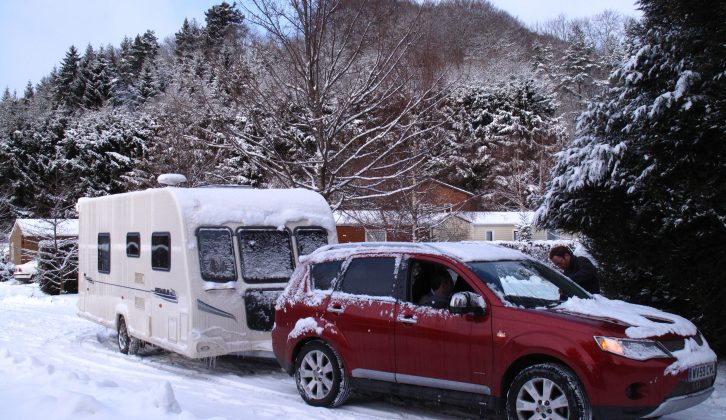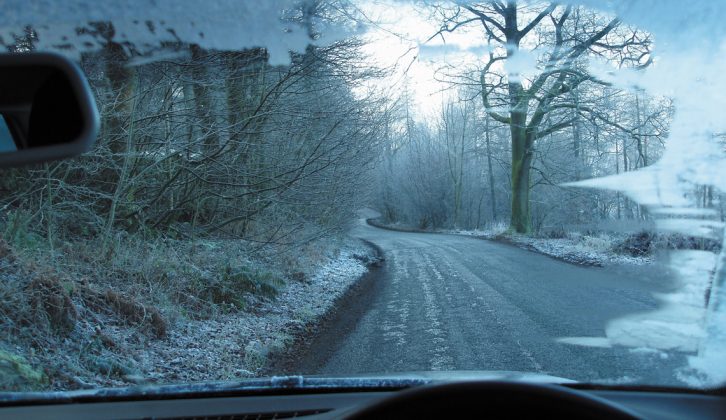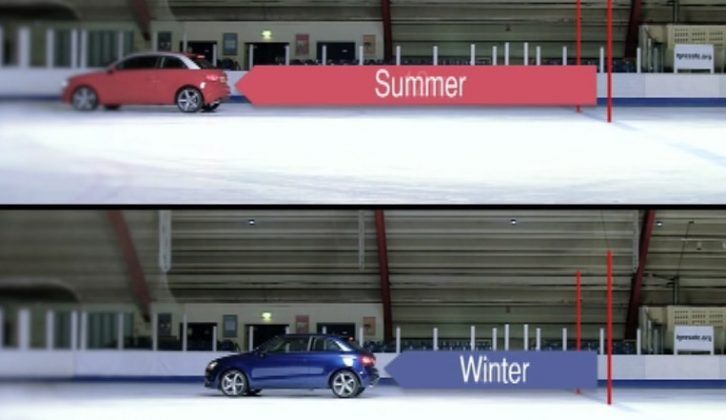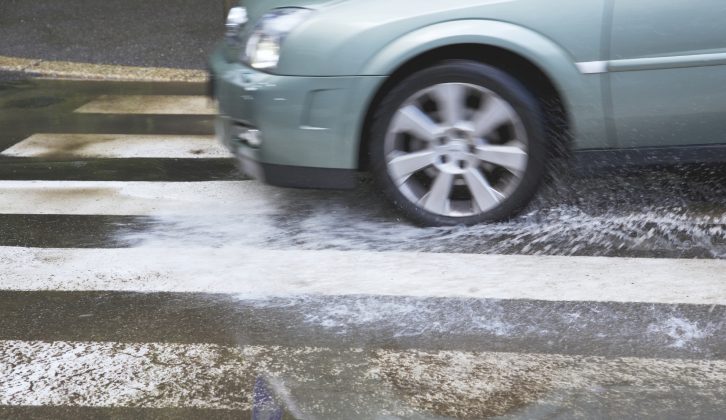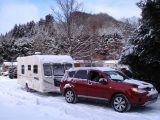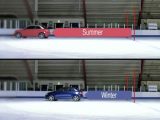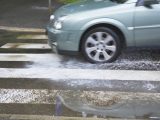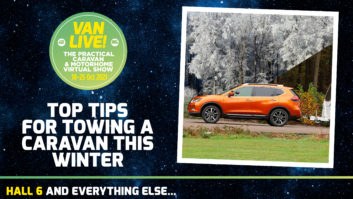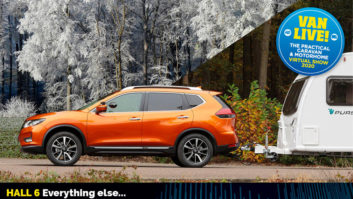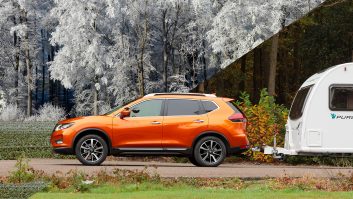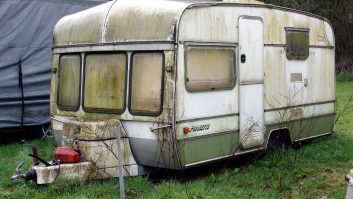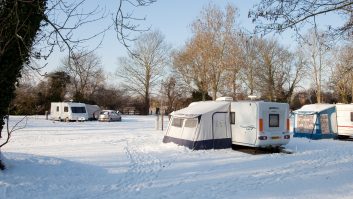The arrival of winter doesn’t have to stop you towing, or taking caravan holidays. In fact, with the right preparation and equipment, winter can be one of the most enjoyable times of year to go touring.
If you’re one of the hardy caravanners who tows all year round, make sure you have the best tow car for the job. In addition, swapping to winter tyres can make a big difference to your tow car’s traction, braking and cornering grip. And contrary to what some drivers think, winter tyres aren’t just of benefit when there’s snow and ice on the ground. Whenever the temperature drops below 7˚C, winter tyres work better than summer tyres.
When it turns chilly, regular summer tyres harden and lose grip. Winter tyres include more natural rubber and advanced silica compounds in their construction, which reduce hardening at low temperatures. Winter tyres also feature different tread patterns, with prominent sipes to efficiently clear away water and slush.
The difference in performance can be spectacular. Tests by the British Tyre Manufacturers’ Association found that a car with winter tyres braking from 60mph on a wet road at 5˚C stopped five metres shorter than a car on summer tyres. To put that in context, five metres is the length of a large 4×4 or a luxury saloon.
When there is snow and ice on the ground, the difference in braking performance between summer and winter tyres is even greater. According to the industry body, Tyresafe, stopping on icy roads from 20mph takes 11 metres less on winter tyres – more than two car lengths. Stopping from 30mph on snowy roads takes eight metres less.
Now, it’s easy to be cynical and think these figures are trotted out by the tyre industry, keen to boost sales. However, independent testing by the likes of our colleagues at Autocar has proven the benefits of winter tyres. And if you’ve ever driven or towed in Scandinavia, you’ll have seen how drivers go about their daily business without fuss in conditions that would cause gridlock in Britain.
The cost of winter tyres is one reason many drivers choose not to make the switch, but it’s nothing like as great as it first appears. Yes, you’re shelling out for two sets of tyres instead of one, but since the summer tyres aren’t being worn when the winter rubber is on the car, each set lasts much longer. Storing the unused set is another potential issue, but quite a few car dealers now offer a ‘tyre hotel’ service to keep your summer tyres safely stored until the spring.
There’s more to preparing your tow car for winter than swapping the rubber. At this time of year it’s important to check your car battery is in good condition. You can extend the battery life by switching off power-hungry features such as fans and heated rear windows once they have done their job. Make sure the wiper blades are cleaning the screen properly, and replace them if necessary. Top up the screen washer fluid, adjusting the concentration for winter, and make sure the car’s radiator contains enough antifreeze.
Make sure you keep the lights on your car and caravan clean, and that the number plates aren’t obscured under a layer of grit and grime. On long journeys, check again if you stop off on the motorway. Some baby wipes will have them clean again in next to no time.
It’s good practice to carry an emergency kit in the car. An ice-scraper, a shovel, a blanket, a first aid kit, warning triangles, hi-vis jackets and some food and drink are all worth having. The chances are you’ll get through the winter without needing all these items, but you may have cause to be glad of them.
If the weather turns bad, it pays to modify your driving style, too. You should always leave yourself plenty of stopping distance when towing, but that goes double if there’s a risk of snow and ice on the ground. Gently does it when the weather’s bad – accelerating, braking and steering should be done smoothly and gradually.
Use a high gear on the flat or when towing uphill to reduce the chance of wheelspin, but don’t choose such a high gear that the engine labours. When towing downhill, select a low gear to help control the speed of the outfit.
You should also plan your route carefully with an eye on the weather. A scenic country road may be fine in mid-summer, but in cold weather it’s better to stick to major routes as far as possible, which are more likely to have been gritted.
Once you reach your campsite and you have pitched your van with due consideration for the conditions, you’ll be glad of having made the effort. Those sites which do stay open all year round tend to be quieter in winter, and nothing beats the solitude of a cold, crisp winter’s morning.
With the right preparation and equipment, winter can be one of the most enjoyable times of year to go touring
